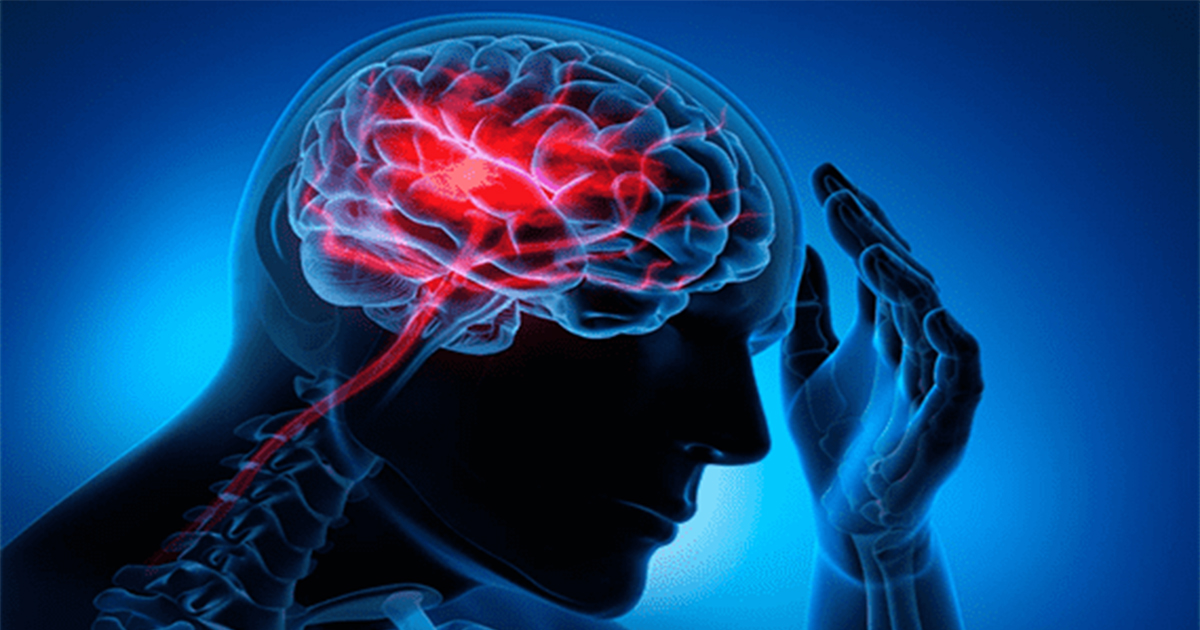WHAT IS STROKE OR CEREBROVASCULAR ACCIDENTS ?

STROKE OR CEREBROVASCULAR ACCIDENTS
INTRODUCTION:
“WHAT IS STROKE OR CEREBROVASCULAR ACCIDENTS”. Stroke is becoming an important cause of premature death and disability in developing countries like India and Pakistan.It is the chief cause of mortality and morbidity worldwide affecting millions of people every year.
Brain cell function requires a constant delivery of oxygen and glucose from the bloodstream. A stroke, or cerebrovascular accident (CVA) occurs when blood supply to part of the brain is disrupted, causing brain cell to die. Blood flow can be compromised by a variety of mechanisms. A stroke is due to lesion affecting the opposite side of cerebrum. Thus right lesion causes left stroke . It can cause sensory, motor, perceptual mental deficits. It can also lead to language disorders.
A stroke which is for less than 24 hours duration is called transient ischemic attack (TIA).
DEFINATION:
It is rapidly developing clinical signs of focal disturbances of cerebral function of presumed vascular origin and of more than 24 hours duration.
ETIOLOGY:
- Atherosclerosis
- Emboli
- Hemorrhage
- Hypertension
- Ischemia
Warning Signs of Stroke:
- Sudden numbness or weakness of face, arm, or leg especially one side of the body
- Sudden confusion
- Trouble in speaking or understanding
- Sudden trouble in seeing in one or both eyes
- Sudden trouble in walking
- Dizziness
- Loss of Balance or coordination
- Sudden, severe headache
- Sudden nausea
ISCHEMIC STROKES :
These are the result of a thrombus, or embolism leading to block to the cerebral blood flow which deprives the brain of needed oxygen and glucose, disrupts cellular metabolism, and leads to injury and death of tissues.
-
Cerebral Thrombosis:
Formation of blood clot within cerebral arteries or their branches.Thrombi lead to ischemia or occlusion ( cerebral infarction)
-
Cerebral Embolus:
It is collected matter(blood clot, plaque) formed else where released into blood stream, produces ischemia or infarction.

Hemorrhagic Strokes:
It is due to the rupture or trauma of intra cerebral vessels leading to abnormal bleeding into extravascular areas of brain resulting increased ICP( intracranial pressure). The hemorrhage can be:
Intracerebral Hemorrhage:
Rupture of cerebral vessel with bleeding inside the brain.
Primary Cerebral Hemorrhage:
Mostly occurs in small blood vessels weakened by atherosclerosis producing an aneurysm ( abnormal dilation).
Subarachnoid Hemorrhage:
Bleeding into subarachnoid space typically from berry or saccular aneurysms.
What are the risk factors to develop stroke?
- Hypertension
- Diabetes
- Elevated total cholesterol and LDL
- Decreased LDL
- Cardiac disorders like rheumatic heart valvular disease , endocarditis or cardiac surgeries.
TYPES OF STROKE
According to management category:
- TIA( transient ischemic attack)
- Minor stroke
- Major stroke
- Deteriorating stroke
Minor Stroke:
It is one in which there is no neurological deficits with good rehabilitation outcome.
Major Stroke:
It is onein which there is neurological deficits with bad rehabilitation outcome.
Deteriorating Stroke:
This term is used to refer to the patient whose neurological status is deteriorating after admission into the hospital.
PRIMARY IMPAIRMENTS IN STROKE :
- Motor deficits
- Sensory deficits
- PresenceOf abnormal reflexes
- Presence of associated reactions
- Speech and language disorders
- Perceptual problems
Symptoms :
If you or someone you’re with may be having a stroke, pay attention to the time the symptoms began. Some treatments are most effective when given soon after a stroke begins.
Symptoms of Stroke Include:
Trouble Speaking And Understanding What Others Are Saying
A person having a stroke may be confused, slur words or may not be able to understand speech.
Numbness, Weakness Or paralysis In The Face, Arm Or Leg
This often affects just one side of the body. The person can try to raise both arms over the head. If one arm begins to fall, it may be a sign of a stroke. Also, one side of the mouth may droop when trying to smile.
Problems Seeing In One Or Both Eyes
The person may suddenly have blurred or blackened vision in one or both eyes. Or the person may see double.
Headache
A sudden, severe headache may be a symptom of a stroke. Vomiting, dizziness and a change in consciousness may occur with the headache.
Trouble Walking
Someone having a stroke may stumble or lose balance or coordination.
Risk Factors :
Many factors can increase the risk of stroke. Potentially treatable stroke risk factors include:
Lifestyle Risk Factors
- Being overweight or obese.
- Physical inactivity.
- Heavy or binge drinking.
- Use of illegal drugs such as cocaine and methamphetamine.
Medical Risk Factors
- High blood pressure.
- Cigarette smoking or secondhand smoke exposure.
- High cholesterol.
- Diabetes.
- Obstructive sleep apnea.
- Cardiovascular disease, including heart failure, heart defects, heart infection or irregular heart rhythm, such as atrial fibrillation.
- Personal or family history of stroke, heart attack or transient ischemic attack.
- COVID-19 infection.
Other Factors Associated With a Higher Risk of Stroke Include:
- Age—People age 55 or older have a higher risk of stroke than do younger people.
- Race or ethnicity—African American and Hispanic people have a higher risk of stroke than do people of other races or ethnicities.
- Sex—Men have a higher risk of stroke than do women. Women are usually older when they have strokes, and they’re more likely to die of strokes than are men.
- Hormones—Taking birth control pills or hormone therapies that include estrogen can increase risk.
Complications :
A stroke can sometimes cause temporary or permanent disabilities. Complications depend on how long the brain lacks blood flow and which part is affected. Complications may include:
Loss of Muscle Movement, Known As Paralysis
You may become paralysed on one side of the body. Or you may lose control of certain muscles, such as those on one side of the face or one arm.
Trouble Talking Or Swallowing
A stroke might affect the muscles in the mouth and throat. This can make it hard to talk clearly, swallow or eat. You also may have trouble with language, including speaking or understanding speech, reading or writing.
Memory Loss Or Trouble Thinking
Many people who have had strokes experience some memory loss. Others may have trouble thinking, reasoning, making judgments and understanding concepts.
Emotional Symptoms
People who have had strokes may have more trouble controlling their emotions. Or they may develop depression.
Pain
Pain, numbness or other feelings may occur in the parts of the body affected by stroke. If a stroke causes you to lose feeling in the left arm, you may develop a tingling sensation in that arm.
Changes In Behaviour And Self-Care
People who have had strokes may become more withdrawn. They also may need help with grooming and daily chores.
Every day may reduce the risk of stroke. The Mediterranean diet, which emphasizes olive oil, fruit, nuts, vegetables and whole grains, may be helpful.
Exercise Regularly
Aerobic exercise reduces the risk of stroke in many ways. Exercise can lower blood pressure, increase the levels of good cholesterol, and improve the overall health of the blood vessels and heart. It also helps you lose weight, control diabetes and reduce stress. Gradually work up to at least 30 minutes of moderate physical activity on most or all days of the week. The American Heart association recommends getting 150 minutes of moderate-intensity aerobic activity or 75 minutes of vigorous aerobic activity a week. Moderate intensity activities can include walking, jogging, swimming and bicycling.
Drink Alcohol In Moderation, If At All.
Drinking large amounts of alcohol increases the risk of high blood pressure, ischemic strokes and hemorrhagic strokes.”WHAT IS STROKE OR CEREBROVASCULAR ACCIDENTS”. Alcohol also may interact with other medicines you’re taking. However, drinking small to moderate amounts of alcohol may help prevent ischemic stroke and decrease the blood’s clotting tendency. A small to moderate amount is about one drink a day. Talk to your healthcare professional about what’s appropriate for you.
Treat Obstructive Sleep Apnea (OSA).
OSA is a sleep disorder that causes you to stop breathing for short periods several times during sleep. Your healthcare professional may recommend a sleep study if you have symptoms of OSA. Treatment includes a device that delivers positive airway pressure through a mask to keep the airway open while you sleep.
Don’t Use Illicit Drugs.
Certain illicit drugs such as cocaine and methamphetamine are established risk factors for a TIA or a stroke.
Preventive Medicines :
If you have had an ischemic stroke, you may need medicines to help lower your risk of having another stroke. If you have had a TIA, medicines can lower your risk of having a stroke in the future. These medicines may include:
Anti-platelet drugs
Platelets are cells in the blood that form clots. Anti-platelet medicines make these cells less sticky and less likely to clot. The most commonly used anti-platelet medicine is aspirin. Your healthcare professional can recommend the right dose of aspirin for you.
If you’ve had a TIA or minor stroke, you may take both an aspirin and an anti-platelet medicine such as clopidogrel (Plavix).”WHAT IS STROKE OR CEREBROVASCULAR ACCIDENTS”. These medicines may be prescribed for a period of time to reduce the risk of another stroke. If you can’t take aspirin, you may be prescribed clopidogrel alone. Ticagrelor (Brilinta) is another anti-platelet medicine that can be used for stroke prevention.
Blooding-Thinning Medicines, Known As Anticoagulants
These medicines reduce blood clotting. Heparin is a fast-acting anticoagulant that may be used short-term in the hospital.
Slower acting warfarin (Jantoven) may be used over a longer term. Warfarin is a powerful blood-thinning medicine, so you need to take it exactly as directed and watch for side effects. You also need regular blood tests to monitor warfarin’s effects.
Several newer blood-thinning medicines are available to prevent strokes in people who have a high risk. These medicines include dabigatran (Pradaxa), rivaroxaban (Xarelto), apixaban (Eliquis) and edoxaban (Savaysa).”WHAT IS STROKE OR CEREBROVASCULAR ACCIDENTS”. They work faster than warfarin and usually don’t require regular blood tests or monitoring by your healthcare professional. These medicines also are associated with a lower risk of bleeding complications compared to warfarin.
Physiotherapy Management:
- Bobath concept
- Brunnstrom approach
- Peto Approach
- Jhonstone Approach
- Motor Relearning Program
- Proprioceptive Neuromuscular Facilitation
- Rood Approach








